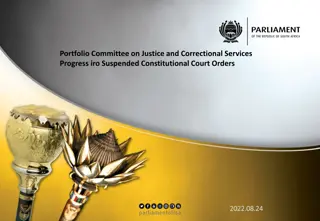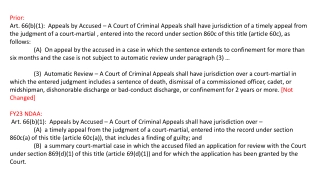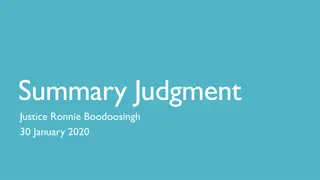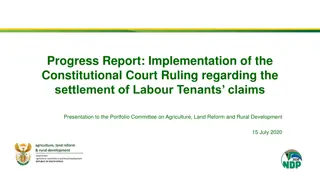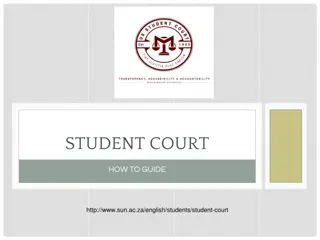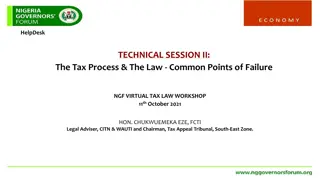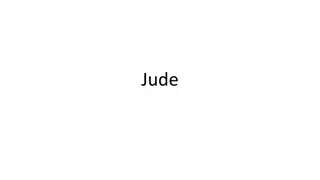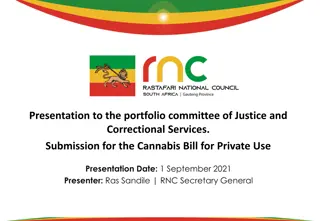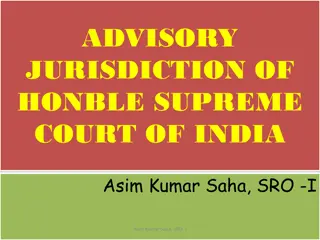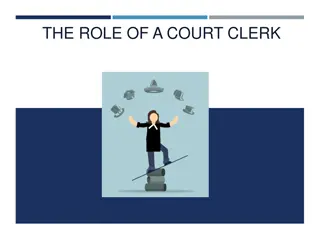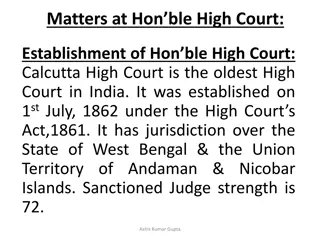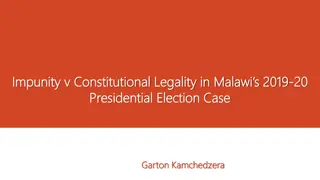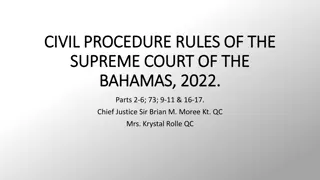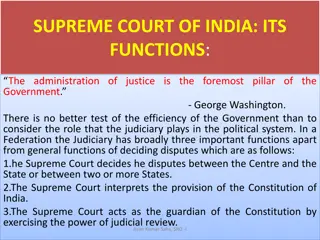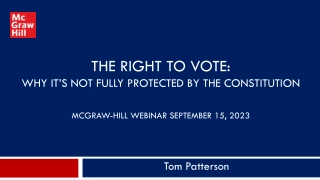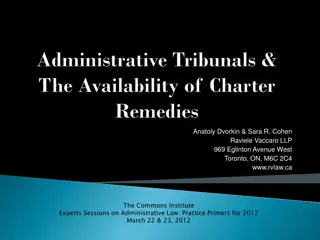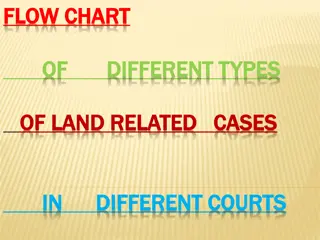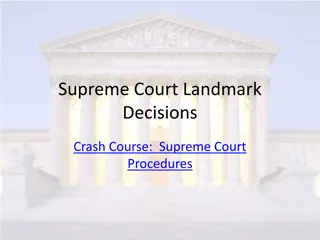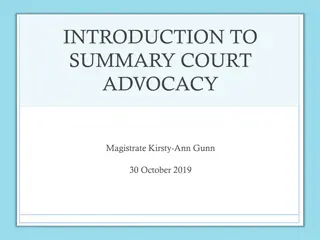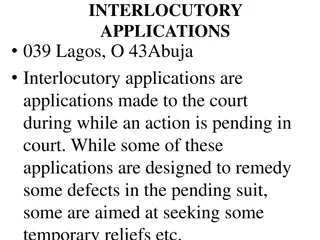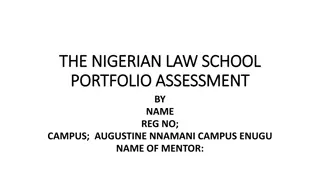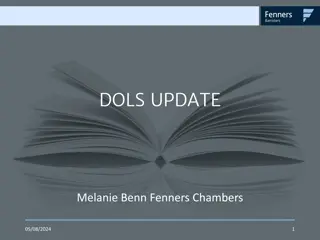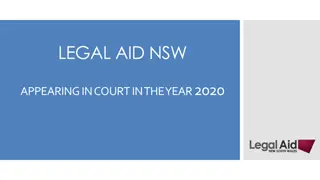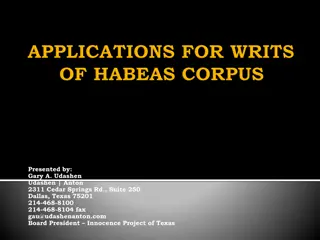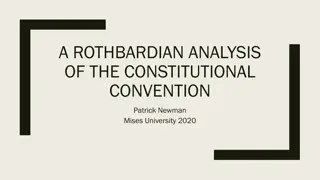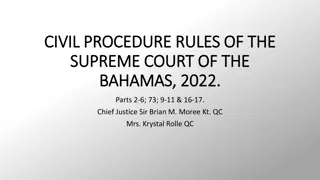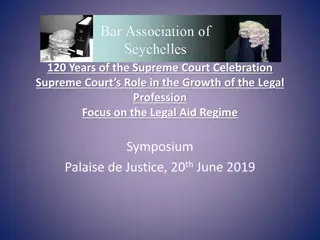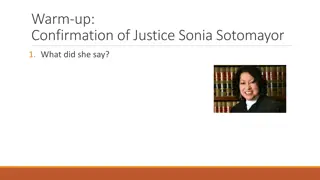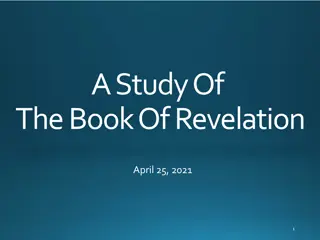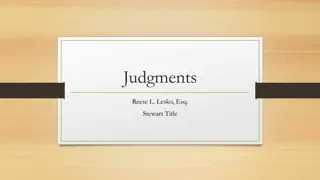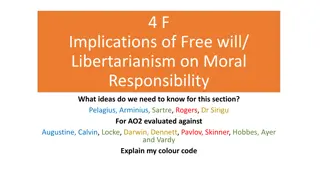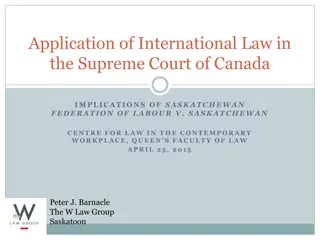Analysis of Constitutional Court Judgment Implications
This analysis delves into the implications of the Constitutional Court judgment on the Electoral Amendment Act, focusing on two court challenges, three judgments rendered, and the effects on contestants and candidate nominations. The background, court challenges, judgments, and their implications are discussed, providing an in-depth examination of the legal ramifications of the ruling.
Download Presentation

Please find below an Image/Link to download the presentation.
The content on the website is provided AS IS for your information and personal use only. It may not be sold, licensed, or shared on other websites without obtaining consent from the author. Download presentation by click this link. If you encounter any issues during the download, it is possible that the publisher has removed the file from their server.
E N D
Presentation Transcript
IMPLICATIONS OF THE CONSTITUTIONAL COURT JUDGMENT 08 December 2023 1
CONTENTS 1. Background 2. Two Court Challenges 3. Three Judgments 4. Basis of Judgments 5. Implications on Contestants 6. Implications for Candidate Nomination 7. Concluding Remarks 2
Background BACKGROUND Parliament passed Electoral Amendment Act in February 2023 to bring it in line with the order of the Constitutional Court in the New Nation Matter. President assented to Act in April 2023 and proclaimed commencement in June 2023. 3
COURT CHALLENGES Two Constitutional Court applications challenging aspects of the Act. Applications heard on 29 and 30 August and judgment handed down on 4 December 2023. 4
COURT CHALLENGES First Application Independent Candidate Association South Africa challenged the 200/200 split of the 400 seats in the National Assembly. Invited the Court to direct a split of 350/50. Court dismissed the application in a unanimous judgment penned by Mhlantla J. 5
COURT CHALLENGES Second Application One Movement South Africa NPC (OSA) launched two challenges. In the first, OSA challenged the 15% signature requirement as it applied to independent candidates in section 31B(3)(a)(i) and (ii) of the Electoral Act. The second challenge concerned the recalculation method adopted in the Electoral Act to reallocate seats which may be required due to, for example, forfeiture of a seat by a party or independent candidate or a opening occurring due to an 6 elected independent vacating a seat.
THREE JUDGMENTS Three judgments produced by the Court in the OSA challenge: Majority judgment on the 15% signature requirement by Kollapen J with four (4) other judges concurring (Maya DCJ, Mhlantla J, Rogers J and Theron J). Minority judgment on 15% signature requirement by Zondo CJ and three (3) other judges concurring (Mathopo J, Schippers AJ and van Zyl AJ). Minority judgment on recalculation method by Theron J with 7 Rogers J concurring.
THREE JUDGMENTS Therefore: Zondo CJ s judgment was the majority for the recalculation challenge and the minority for the signature challenge; Kollapen J s judgment was the majority for the signature challenge; and Theron J s judgment was the minority for the 8 recalculation challenge.
BASIS OF JUDGMENTS Dismissal of the Independent Candidate Association South Africa 200/200 split challenge was on the basis that the split was rational and served a legitimate government purpose. The dismissal of OSA s recalculation method challenge was on the basis that it was devoid of any merit . OSA s 15% signature requirement challenge was upheld on the basis that the quantum of signatures constituted an arbitrary limitation of constitutionally guaranteed rights. 9
IMPLICATIONS OF JUDGMENTS The 200/200 split of the 400 seats in the National Assembly is confirmed. The 15% signature requirements is struck down and replaced by a read-in of 1 000 signatures in respect of independent candidates (section 31B(3) Electoral Act). While section 27(2)(cB) Electoral Act, contains a similar requirement for unrepresented parties, the Court has not invalidated it nor struck it down. Principally, because the challenge to that section was not properly before the Court and no submissions were made to the 10 Court in relation thereto.
IMPLICATIONS FOR CANDIDATE NOMINATION An independent candidate must obtain and submit 1 000 signatures for each region they stand in. The signatures may be obtained from voters registered in other regions and are not confined to the region being contested by the independent candidate. This is so because of the text in the read-in clause which provides that the names of voters must appear on the national 11 segment of the voters roll .
IMPLICATIONS FOR CANDIDATE NOMINATION An independent candidate may not be nominated to contest more than one region with only 1 000 signatures. The provision says that a candidate must obtain 1 000 signatures for each region in which the candidate intends to contest an election. Each is a determinant that refers to individual regions the requirement of 1 000 signatures mentioned in the provision applies to the regions individually; it applies for each region the candidate wishes to contest. To illustrate: An independent candidate who contests four regions, will need to have the support of 1 000 voters per region, i.e. 4 000 voters. 12
IMPLICATIONS FOR CANDIDATE NOMINATION An unrepresented party must still meet the 15% signature requirement in the Act. 13
CONCLUDING REMARKS 1. The signature capture portal to facilitate recording of details of voters supporting the candidature of independent candidates and unrepresented parties was developed on the basis of 15% signature requirement. 2. Following the judgment of the Court, work has commenced to adjust the system to accord with the requirements determined by the Court in respect of the nomination of independent candidates. 3. Similarly, candidate nomination regulations are being reviewed for consistency with the determination of the Court. 14
CONCLUDING REMARKS 4. Additionally, educational material content is being reviewed and adjusted for consistency with the order of the Court. 5. The costs of administering elections are projected to increase relative to the increase in number of contestants. 6. Likewise, the increase in number of contestants will have corresponding impact on increased cost for additional ballot boxes, possible additional staff to deal with the increased volumes and complexities at voting stations, increased logistics costs based on additional volumes. 15
CONCLUDING REMARKS 7. The design elements of the ballot paper used hitherto, will change. Ballots will be set in more than one column and possible in multi-page booklets. The implications are that: Voters will take longer to locate a candidate or party of their choice on the ballot paper. Foreseeable increase in instances of spoilt and miscast votes even with increased balloting education. Longer periods will be required to count votes at voting stations and in the result collation process. It may not be possible for the Commission to announce results in the 16 traditional three days after voting.
CONCLUDING REMARKS 8. There is imminent court application/s challenging the rationality and constitutionality of the requirement for unrepresented parties to meet 15% signature requirement in light of the read-in remedy for independent candidates. 17


